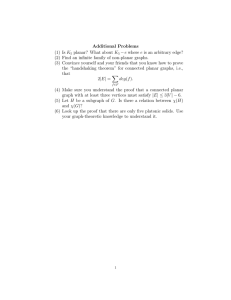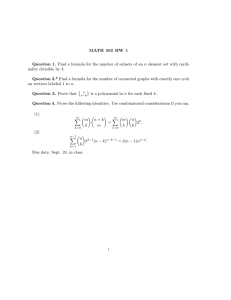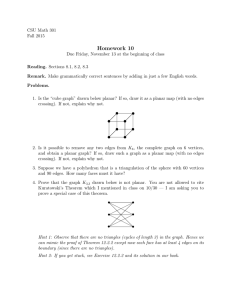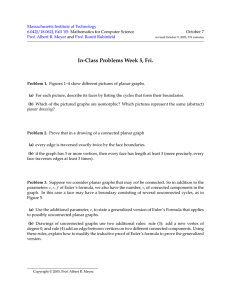Homework 6
advertisement
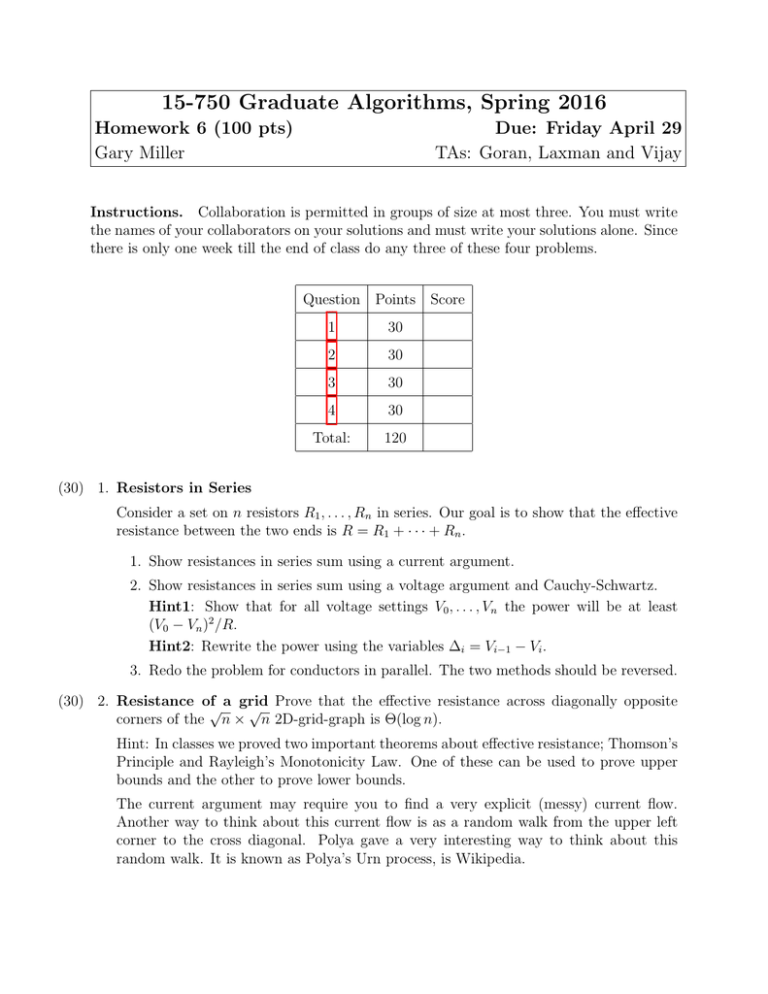
15-750 Graduate Algorithms, Spring 2016 Homework 6 (100 pts) Gary Miller Due: Friday April 29 TAs: Goran, Laxman and Vijay Instructions. Collaboration is permitted in groups of size at most three. You must write the names of your collaborators on your solutions and must write your solutions alone. Since there is only one week till the end of class do any three of these four problems. Question Points Score 1 30 2 30 3 30 4 30 Total: 120 (30) 1. Resistors in Series Consider a set on n resistors R1 , . . . , Rn in series. Our goal is to show that the effective resistance between the two ends is R = R1 + · · · + Rn . 1. Show resistances in series sum using a current argument. 2. Show resistances in series sum using a voltage argument and Cauchy-Schwartz. Hint1: Show that for all voltage settings V0 , . . . , Vn the power will be at least (V0 − Vn )2 /R. Hint2: Rewrite the power using the variables ∆i = Vi−1 − Vi . 3. Redo the problem for conductors in parallel. The two methods should be reversed. (30) 2. Resistance of√ a grid √ Prove that the effective resistance across diagonally opposite corners of the n × n 2D-grid-graph is Θ(log n). Hint: In classes we proved two important theorems about effective resistance; Thomson’s Principle and Rayleigh’s Monotonicity Law. One of these can be used to prove upper bounds and the other to prove lower bounds. The current argument may require you to find a very explicit (messy) current flow. Another way to think about this current flow is as a random walk from the upper left corner to the cross diagonal. Polya gave a very interesting way to think about this random walk. It is known as Polya’s Urn process, is Wikipedia. (30) 3. Resistance as a Metric Show that given a graph of conductors G = (V, E, c) the effective resistance between pairs of vertices form a metric space over V . That is, if we let R(u, v) denote the effective resistance between u and v, show: • R(u, v) ≥ 0. • R(u, v) = 0 if and only if u = v • R(u, v) = R(v, u). • R(u, v) + R(v, w) ≥ R(u, w). Hint: To show the triangle inequality I think a current argument may be the simplest. (30) 4. Separators in outer planar graphs (a) We say that a graph is outer planar if it is 1) planar, and 2) there exists a planar embedding such that all of the vertices are on the boundary of the outer face. Prove that all outer-planar graphs have 2-vertex-separators. Do not give a proof by algorithm. Use the tools developed in class. HINT: Recall that augmenting the graph does not change the size of the separators. (b) There is a natural extension of the definition of outer planar graphs. Say that a graph is k-outer planar if it can be drawn in the plane so that the vertices can be partitioned into k nested “rings” where all all edges stay within one ring or go between adjacent rings. Prove that all k-outer planar graphs have 2k-vertex separators. (c) Given an embedded triangulated k-outer planar give an O(n) time algorithm to find this 2k-separator. Page 2
